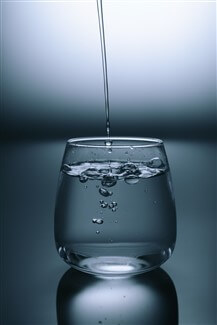December 2022: Toxic-free Trees and Guiltless Gifts
In this edition:
- Healthy Holiday Shopping Guide
- Who Wrote the WHO Guidelines?
- A Toxic-Free Christmas Tree
- Are Teflon Pans Safe to Use?
- The Proof is in the Dust
- Green Science Policy Institute in the News
I hope you’re enjoying the beginning of the holiday season and the end of 2022. Our Institute is wrapping up a successful year and looking forward to reaching new heights with our visionary new co-leader—Jen Jackson—on board.
In this newsletter, we have toxic-free holiday gift ideas that we hope you will find useful. We also have some advice on safer Christmas tree options.
Our annual fund campaign is off to a great start. Thanks to our donors who have already made their contributions towards our work for a healthier world in 2023. Please donate online or send a check to Green Science Policy Institute, PO Box 9127, Berkeley, CA 94709.
Kicking off our work together, Jen and I attended Greenbuild, the largest annual event for green building professionals. While that industry has made great strides in reducing the carbon footprint of buildings, more focus and progress on toxics reduction is needed. That means selecting building materials that aren’t harmful to our climate or public health. As discussed in our New York Times op-ed, the climate, plastic, and chemical crises are a three-headed monster that must be tackled at once.
To spread that message, we led a session with Google, Harvard, and CBRE, all members of our Material Buyers Club, who shared their experiences using the power of purchasing to make workplaces healthier for people and the planet. That includes steering clear of building materials with PFAS. Speaking of PFAS, the scientific community was recently roiled by a mystery. The World Health Organization (WHO) put out draft drinking-water guidelines for PFOS and PFOA that were bafflingly unscientific and unprotective. Who are the scientists that would disregard such robust human and animal evidence of harm? Well, we don’t know because the names of the authors weren’t disclosed. As described in the blurb below, we sent WHO a letter from 116 leading scientists urging an overhaul of the draft and transparency around its authorship.
In more encouraging news, California filed a lawsuit against 3M, DuPont, and 16 other companies for manufacturing, distributing, marketing and/or selling PFAS. “[w]ithout drastic action, we’ll be dealing with the damage wrought by PFAS for generations. We won’t let its manufacturers off the hook,” said Attorney General Rob Bonta. California joins 15 other states that have sued PFAS manufacturers. Minnesota settled with 3M for $850 million in 2018.
For holiday gifts, you might consider autographed copies of my memoirs Annapurna: A Woman’s Place, Breaking Trail: A Climbing Life, and the famous “Woman’s Place is on Top: Annapurna” t-shirts on my website for purchase as well as photo adventure albums to peruse.
With warm wishes for a happy and healthy holiday season,
Arlene and the Green Science Policy Team
Healthy Holiday Shopping Guide
By Rebecca Fuoco
Making your list and checking it twice?
Beware, three of the most popular holiday gift categories can be a minefield for nearly all six classes of harmful chemicals.
See below for some tips and tools for safer shopping.
Clothing & Accessories
- Avoid clothing and shoes advertised as “water-resistant” or “stain-resistant,” which may have PFAS. Check out our list of PFAS-free apparel, outdoor gear, and shoes.
- Avoid clothing advertised as “antimicrobial,” “antibacterial,” or “anti-odor.”
- Avoid fast-fashion retailers.
Makeup & Personal Care Products
- Avoid personal care products with “perfluor-,“ “polyfluor-,“ and “PTFE” on the label. Check out our list of PFAS-free makeup and personal care products.
- Avoid products that are advertised as “antimicrobial,” “antibacterial,” or “anti-odor.”
- Look for fragrance-free personal care products, since the ingredients “fragrance,” “perfume,” or “parfum” often mean phthalates are present.
- Use Clearya, a free browser plug-in and mobile app that scans and flags unsafe ingredients for products on Amazon, Sephora, and other online stores.
Children’s Toys
- Avoid plastic toys, and instead look for toys made of FSC-certified wood, natural rubber, or organic fabric. Even plastic toys advertised as “BPA-free” may contain similarly toxic bisphenols like BPS.
- Avoid toys made of vinyl/PVC, which may contain phthalates.
- Avoid painted wooden toys made outside of the U.S. and Europe, which may contain heavy metals.
- Avoid inexpensive metal jewelry or charms, which may contain cadmium or lead.
- Look to retailers dedicated to non-toxic children’s products, like The Tot.
Who Wrote the WHO Guidelines?
By Rebecca Fuoco
Our Institute led more than 100 scientists in sending a letter to the World Health Organization urging a complete overhaul or withdrawal of its draft drinking water guidelines for PFOS and PFOA. The letter details how WHO’s draft eschews calculating health-based standards, tossing established science out the window in favor of a random technology-based approach.
Most egregiously, the draft’s survey of scientific studies omits or obscures robust evidence of the links between PFOS and PFOA exposure and cancer, liver damage, increased cholesterol, and immune system harms. As a result, the draft’s proposed guidelines are a significant departure from the science-based guidelines derived by other major health agencies, including the U.S. EPA.
The letter also notes that WHO did not disclose the names, affiliations, and potential conflicts-of-interest of those involved in the preparation or peer-review of the draft guidelines, as discussed in The Guardian.
Shouldn’t we know who wrote the WHO draft?
A Toxic-Free Christmas Tree
By Lydia Jahl
We hope that all our readers are finding ways to make this holiday season healthier and more sustainable — but one area you may not have considered is your choice of Christmas tree.
One natural option is a freshly cut, organic Christmas tree, but be sure not to apply any flame retardant sprays. While the marketing of such products makes them sound safe, there is little to no data that the flame retardants actually help prevent Christmas trees from catching fire and some may be damaging to the trees. Flame retardant sprays often do not list active ingredients or safety information and should be avoided as some include chemicals harmful to your family and pets. Instead, enjoy that fresh pine scent safely by watering your tree every day, keeping open flames far away from the tree, and only using functional, modern tree lights.
Others may prefer an artificial Christmas tree that can be used year after year, but unfortunately, most are made of polyvinyl chloride (PVC). This is a problematic chemical that may contain lead, phthalates, or even flame retardants. Some artificial trees may be made with polypropylene or polyethylene, which are better options. For an all-around healthier holiday no matter your tree choice, use a HEPA air purifier (without any ionizer or UV functionalities) and vacuum cleaner, and frequently dust with a damp cloth.
You can also consider a non-traditional option. For example, some farms allow you to borrow a potted live Christmas tree for the season which they will take care of throughout the rest of the year. Or, you can hang a green fabric Christmas tree on the wall and pin it with holiday cards or even make a minimalist wooden Christmas tree out of dowels or driftwood.
Are Teflon Pans Safe to Use?
By Grace Sandel
A recently published study by Luo et al. analyzed the release of microplastics from scratched non-stick pots. Non-stick cookware is usually coated with PFAS, most often PTFE (Teflon). Abrasion on the surface of non-stick cookware can break the non-stick film and scratch the surface, releasing microplastics and nanoplastics. Should you throw out Teflon pans? The particles contaminate food and are then ingested by humans. The researchers used a process called Raman spectroscopy to understand the size and number of microplastics created after using different utensils on non-stick pots.
Mimicking stirring and mixing techniques broke the film coating of all new pots and scratched the surface, releasing microplastics. Used pots released more and larger debris than the new pots due to their age and previous cooking history. A tiny area of broken film might contain over 2,000,000 particles of microplastics and nanoplastics, and a scratch might contain over 9,000 particles of microplastics and nanoplastics. This research suggests that only soft utensils such as wood should be gently used on non-stick cookware. Once you see a scratch in your pot, you should dispose of it to prevent ingestion of PFAS-laden microplastics.
Another reason for concern over Teflon cookware is that it may contain other PFAS chemicals like PFOA. Consumer Reports measured PFOA in a PTFE-coated pan even though the pan was labeled “PFOA-free.”
How can you avoid harmful microplastics and harmful chemicals in cookware amid the prevalence of PTFE coating and misleading labeling practices? One way is to purchase ceramic non-stick pans - review our list of PFAS-free cookware. Another option is to shop for regular cookware instead of non-stick. Consumer Reports recommends cast iron, carbon steel, and stainless-steel alternatives. And if you already own traditional non-stick cookware, be sure to only use it on low heat and dispose of it as soon as it is scratched.
The Proof is in the Dust
By Carol Kwiatkowski
In a recently published study, researchers at Harvard University compared the dust of 12 indoor spaces containing conventional furnishings to 12 similar spaces with “healthier” carpets and furniture (reportedly PFAS-free). Dust is a major route for human exposure to PFAS, especially for children who are closer to the ground and have more hand-to-mouth behavior.
The scientists found that levels of PFAS were lower in the spaces with healthier products, meaning that we can make substantial reductions in our PFAS exposures by replacing carpet and furniture that were treated with PFAS.
This is great news. Perhaps even larger reductions could be achieved with other PFAS-free materials, such as flooring, sealants, adhesives, and paints.
Notably, the sum of specific PFAS only accounted for 9% of the total measure, indicating other unidentified PFAS are contributing a large portion of organic fluorine to dust. As we’ve been saying for years, removing all PFAS from products (the class approach) is what is needed.
Green Science Policy Institute in the News

By Rebecca Fuoco
Below are recent news articles, blogs, podcasts, newsletters, and more that have featured our Institute’s work and expertise.
- Our scientists’ letter to WHO was covered by The Guardian, E&E News, ENDS Europe, Digital Journal, The New Lede, Circle of Blue, Food Safety Magazine, and more.
- ARCHITECT Magazine featured our work on PolyFR foam in an article about healthier insulation. It ends with a great quote from Arlene: “A 'green building' with potentially hazardous insulation isn't a green building at all.”
- Our scientist Lydia Jahl talked about finding PFAS alternatives for the outdoor apparel industry in an interview with Grist.
- Ecotextile News cited our research on PFAS in school uniforms in an article about harmful chemicals in textiles for babies and children.
- Our PFAS-free list was recommended by Home News Now in an article about California’s phaseout of PFAS in textiles.
- Our friends at the Center for Environmental Health listed our Six Classes videos as a resource in a blog post about healthier indoor environments.
Receive Updates By Email
Subscribe to our monthly newsletter and get these updates delivered right to your inbox!






